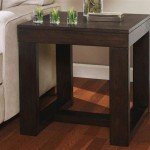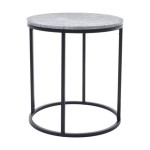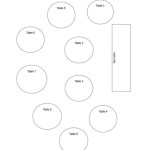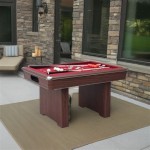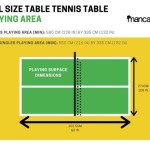8ft Round Table: Determining the Diameter in Inches
Understanding the dimensions of a circular table, particularly its diameter, is crucial for various practical applications. Whether planning an event, designing a dining space, or purchasing a tablecloth, knowing the exact diameter in inches of an 8ft round table is essential for accurate calculations and informed decisions. This article will provide a comprehensive explanation of how to convert feet to inches and accurately determine the diameter of an 8ft round table.
The primary unit of measurement discussed here is the foot (ft), a common unit of length in the imperial and US customary systems. An 8ft round table signifies that its diameter is 8 feet. However, for many applications, converting this measurement to inches is necessary. The conversion factor between feet and inches is fundamental to this process.
One foot is equivalent to 12 inches. This conversion factor is constant and universally accepted. To convert any measurement from feet to inches, multiply the number of feet by 12. This simple calculation ensures accurate conversion and eliminates ambiguity in measurements.
In the case of an 8ft round table, the calculation to determine its diameter in inches involves multiplying 8 feet by 12 inches per foot. This yields the following result: 8 ft * 12 inches/ft = 96 inches. Therefore, an 8ft round table has a diameter of 96 inches.
This measurement is critical for various practical purposes. When planning a seating arrangement, the diameter of the table directly influences the number of chairs that can comfortably fit around it. Similarly, when selecting a tablecloth, the dimensions of the tablecloth must adequately cover the table’s surface. An accurate understanding of the table's diameter ensures that the chosen tablecloth has sufficient overhang for an aesthetically pleasing appearance.
Furthermore, the diameter of the table is relevant in determining the available space within a room or event venue. Understanding the table's footprint allows for efficient space planning and ensures that there is adequate room for both seating and movement around the table. This is particularly important in confined spaces or when arranging multiple tables within a single area.
The measurement of 96 inches for an 8ft round table represents the straight-line distance across the circle, passing through its center. This is the diameter. The radius, which is the distance from the center of the circle to its edge, is half the diameter. In this case, the radius of an 8ft round table would be 48 inches (96 inches / 2 = 48 inches).
Understanding the relationship between the diameter and the radius is useful in certain applications, such as calculating the circumference of the table. The circumference, which is the distance around the table, is calculated using the formula: Circumference = π * Diameter, where π (pi) is approximately 3.14159. For an 8ft round table with a diameter of 96 inches, the circumference would be approximately 301.6 inches (3.14159 * 96 inches = 301.59264 inches).
The precision of these measurements is essential, especially when dealing with custom-made tablecloths or specific space constraints. Inaccurate measurements can lead to discrepancies, resulting in ill-fitting tablecloths or insufficient space for comfortable seating. Therefore, it is crucial to double-check all calculations and measurements to ensure accuracy.
Key Point 1: Converting Feet to Inches
The fundamental principle of converting feet to inches relies on the constant conversion factor: 1 foot equals 12 inches. This conversion is essential in numerous practical scenarios, from interior design and construction to event planning and crafting. The simplicity of the conversion allows for quick and accurate calculations, ensuring that measurements are easily understood and applied.
To convert a measurement from feet to inches, one simply multiplies the number of feet by 12. For example, to determine the equivalent of 5 feet in inches, the calculation would be 5 ft * 12 inches/ft = 60 inches. Similarly, to convert 10 feet to inches, the calculation would be 10 ft * 12 inches/ft = 120 inches. This straightforward process minimizes errors and facilitates efficient measurement conversions.
In the context of the 8ft round table, applying this conversion factor is paramount for determining its diameter in inches. By multiplying 8 feet by 12 inches per foot, we accurately ascertain that the diameter of the table is 96 inches. This measurement is crucial for subsequent calculations and practical applications.
Furthermore, understanding this conversion factor is vital when working with various units of measurement. While feet and inches are commonly used in the imperial and US customary systems, many other units exist. Being able to seamlessly convert between these units ensures accuracy and consistency in measurements, regardless of the system being used.
In practical applications, the conversion from feet to inches is frequently used in tasks such as determining material requirements for construction projects, calculating fabric dimensions for sewing projects, and planning layouts for interior spaces. The accuracy of these conversions directly impacts the outcome of these projects, highlighting the importance of a thorough understanding of the conversion factor.
Key Point 2: Importance of Accurate Table Diameter Measurement
The accurate measurement of a table's diameter, particularly in the case of an 8ft round table, is of significant importance for a variety of reasons. These reasons span across different applications, from event planning and interior design to material selection and space optimization. Ensuring the precision of this measurement minimizes errors and facilitates informed decision-making.
One of the primary reasons for accurate diameter measurement is related to seating arrangements. The diameter of a round table directly influences the number of chairs that can comfortably fit around it. An inaccurate measurement can lead to miscalculations, resulting in either overcrowding or wasted space. This is particularly critical in event planning, where seating capacity is a key factor in determining the overall success of the event.
Furthermore, the accuracy of the table's diameter is paramount when selecting a tablecloth. The dimensions of the tablecloth must adequately cover the table's surface, with sufficient overhang for an aesthetically pleasing appearance. An inaccurate diameter measurement can result in a tablecloth that is either too small, leaving portions of the table exposed, or too large, creating excessive bunching or dragging. To avoid these issues, it is essential to have a precise understanding of the table's diameter.
In the context of interior design, the diameter of the table is a crucial factor in determining the overall layout of a room. Understanding the table's footprint allows for efficient space planning, ensuring that there is adequate room for both seating and movement around the table. This is especially important in confined spaces or when arranging multiple tables within a single area.
Moreover, accurate diameter measurements are essential when ordering custom-made tablecloths or other table coverings. These items are typically tailored to the specific dimensions of the table, and any inaccuracies in the measurements can lead to ill-fitting products. This can result in wasted materials, increased costs, and potential delays in the project.
Key Point 3: Applications of the 96-Inch Diameter Measurement
The determination that an 8ft round table has a diameter of 96 inches has numerous practical applications across various fields. These applications range from event planning and interior design to construction and material selection. Understanding the significance of this measurement enables informed decision-making and efficient execution of tasks.
In event planning, the 96-inch diameter measurement is crucial for determining the seating capacity of the table. An 8ft round table typically accommodates 8 to 10 guests comfortably, depending on the width of the chairs. This information allows event planners to accurately estimate the number of tables required for a specific event and to optimize the seating arrangement for maximum comfort and efficiency.
Furthermore, the 96-inch diameter measurement is essential when selecting tablecloths for the table. A tablecloth with a suitable drop or overhang can be chosen based on this measurement. For example, a tablecloth with a 12-inch drop would need to have a diameter of 120 inches (96 inches + 12 inches + 12 inches) to fully cover the table and provide the desired aesthetic effect.
In interior design, the 96-inch diameter measurement is a key factor in determining the placement of the table within a room. The measurement allows designers to assess the available space and ensure that there is adequate room for both seating and movement around the table. This is particularly important in dining rooms or conference rooms where space is often limited. The designer will also consider the placement of other furniture in the room to create a functional and aesthetically pleasing arrangement.
Moreover, the 96-inch diameter measurement is relevant in construction or renovation projects where custom-made tabletops or table supports are required. The measurement provides the necessary specifications for the fabrication of these components, ensuring that they are accurately sized and fit properly. Custom-made glass or wooden tops can be perfectly fitted to an 8-foot diameter table by considering the 96-inch dimension.
In the context of material selection, the 96-inch diameter measurement is crucial for determining the amount of material needed to cover the table. Whether it is fabric, vinyl, or any other covering material, the measurement allows for accurate calculation of the required quantity, minimizing waste and ensuring cost-effectiveness. This applies to applications such as creating custom table protectors, or adding decorative coverings over existing table surfaces.

Professional Table Seating Guide The Chiavari Chair Company Is Now Chivari

Amish Table Size Guide What Dining Do You Need

Standard Banquet Table Dimensions Dining Height Sizes Tables

60 Round Table Seat 8 To 10 Destination Events

Round Table Seating Guide Diy Kitchen Dining Room

How To Calculate The Best Dining Table Size For Your Room

How To Calculate The Best Dining Table Size For Your Room

How To Calculate The Best Dining Table Size For Your Room

Professional Table Seating Guide The Chiavari Chair Company Is Now Chivari

60 In Round Table Mtb Event Als
Related Posts

